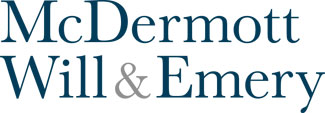On June 13, 2013, the U.S. Supreme Court unanimously decided in Association for Molecular Pathology v. Myriad Genetics, Inc. that naturally occurring DNA segments are not patent eligible because they are products of nature and merely isolating such segments does not change their status for patent eligibility. However, complementary DNA (cDNA) is patent eligible because it is not naturally occurring.
Isolated DNA sequences – patent ineligible
In the third opinion since 2010 dealing with the scope of patent eligibility,1 the Court found that Myriad’s claims directed towards isolated DNA segments fell “squarely within the law of nature exception.” Slip op. at 13. Myriad discovered an “important and useful gene, but separating that gene from its surrounding genetic material is not an act of invention.” Slip op. at 12. The Court rejected the idea that isolation of DNA segments requires severing of chemical bonds, which creates a non-naturally occurring molecule. While Myriad may have expended a significant amount of research effort to discover the location of the genes of interest, effort alone does not render such subject matter patentable.
For landmark Supreme Court decisions regarding patent eligibility, please click here.
cDNA sequences – patent eligible
The Court noted that cDNA differs from isolated DNA segments and does not present the same obstacles for patent eligibility. Notable distinctions, according to the Court, are that cDNA’s creation results in an exons-only molecule, which is not naturally occurring. While acknowledging that the nucleotide sequence of cDNA is dictated by nature, the Court focused on the fact that creation of cDNA “unquestionably creates something new.” Slip op. at 17. cDNA is distinct from the DNA from which it was derived, and thus is not a product of nature. However, the Court noted that, in some instances, such as a very short segment of DNA having no intervening introns, the cDNA may be indistinguishable from the DNA. In such a situation, that cDNA is not patent eligible.
What the Court did not decide
The Court was careful to note that its decision did not implicate method claims, patents on new applications based on discoveries related to specific genes, or patentability of DNA in which the order of naturally occurring nucleotides has changed. Thus, the eligibility of methods of manipulating DNA, applications of knowledge learned from DNA segments, and manipulations of DNA sequences are questions still on the table.
Standing
An additional interesting aside is the Court’s approach to the declaratory judgment standing issue. The Court, in footnote 3, simply indicates that under all of the circumstances presented, the MedImmune standard had been met. Whether this opens the door to additional declaratory judgment actions in the future is uncertain.
Impact
This decision will likely not have a devastating impact on the patent portfolio of genetic diagnostic companies. These companies typically focus more on patents directed towards multi-gene products, methods, and cDNAs than on claims directed to isolated DNA sequences to protect their genetic tests. Nevertheless, should a company seek to assert a patent with claims directed to isolated DNA sequences, such an assertion will now be subjected to summary judgment motions based on the patent ineligibility of such claims.
In the long term, however, today’s decision will likely have a big impact on businesses engaged in developing chemical and biological therapeutics, with patents directed to isolated naturally occurring compounds. The Court has held that merely separating a segment of DNA from its natural surrounding is “not an act of invention.” How such analysis could be applied in the chemical and pharmaceutical arts remains to be seen. The Court’s opinion likely will be used to attack chemical and pharmaceutical patents directed towards naturally occurring compounds like proteins, antibodies, and other naturally occurring biomolecules. Whether such patents fall within chemical compositions or focus on the chemical changes, which result from isolation that the Court has suggested may be patentable, will likely be determined on a case by case basis.
Lastly, in an era of ever polarizing politics, it is fascinating to see that this decision, like most other recent U.S. Supreme Court decisions involving patents,2 is a 9-0 decision. All of the current justices unanimously agree on what is the appropriate scope of patent eligibility.
1 Bilski v. Kappos, 130 S. Ct. 3218 (2010) and Mayo Collaborative Services v. Prometheus Lab., Inc., 132 S. Ct. 1289 (2012) are two unanimous U.S. Supreme Court decisions dealing with the patent eligibility of method claims.
2 See Bilski v. Kappos, 130 S. Ct. 3218(2010); Mayo v. Prometheus, 132 S. Ct. 1289(2012); Caraco Pharm. Lab., Ltd. v. Novo Nordisk A/S, 132 S. Ct. 1670 (2012); Kappos v. Hyatt, 132 S. Ct. 1690 (2012); Bowman v. Monsanto Co., No. 11-796 (2013).









